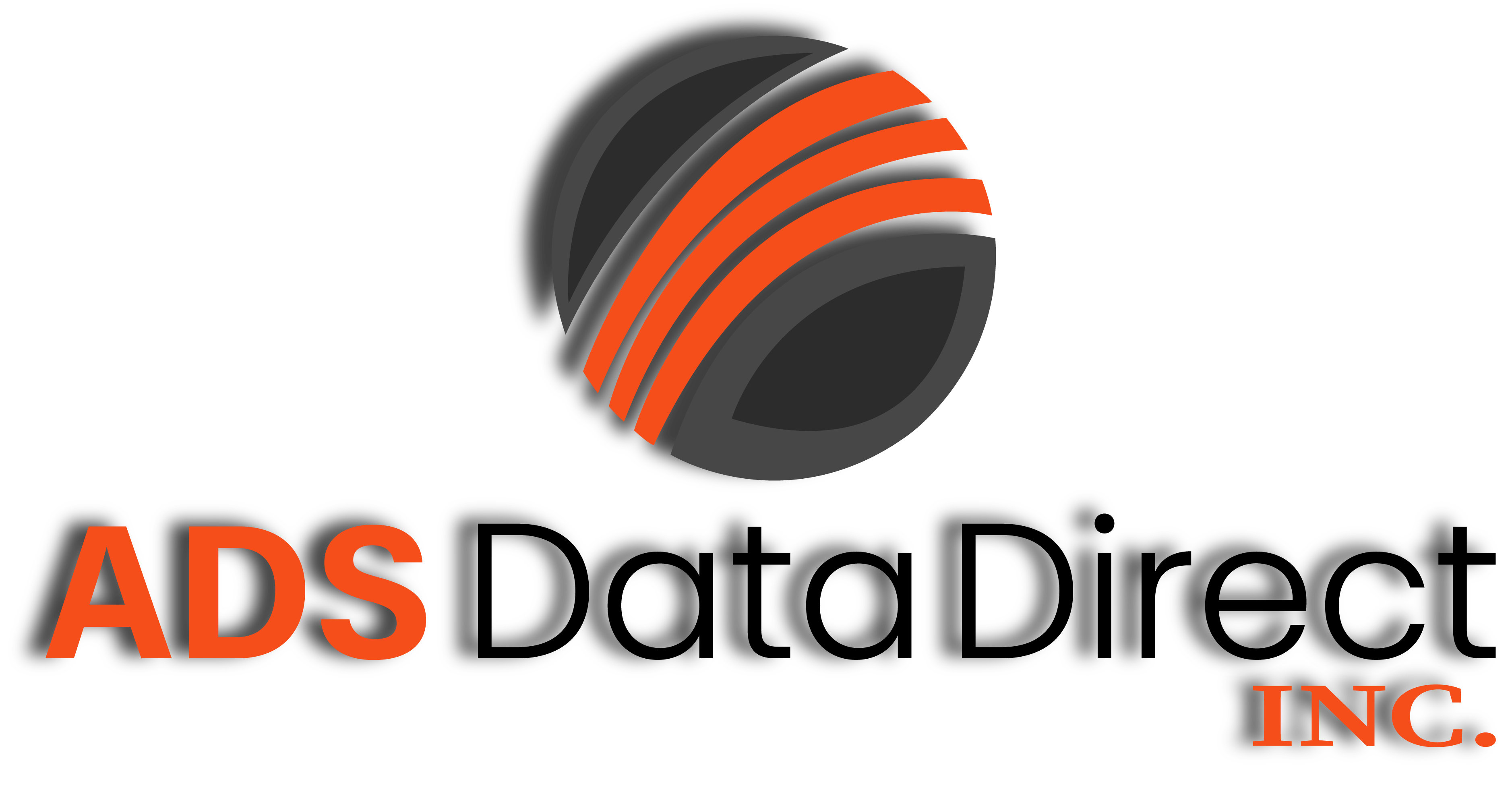Digital Advertisement with ADS Data Direct! Excavations of ruins in Rome, Egypt, and Greece have yielded hand-painted messages translating into notices for lost-and-found articles. During the Middle Ages in Europe, signs for services like cobblers and tailors were usually in the form of drawings since many people couldn’t read or write. These were some of the very earliest forms of written advertising.
Later, people clamored to get their hands on newspapers to see the news, the latest items for sale by local merchants, and the newest shows or movies. National magazines, radio, and television became popular channels because of the number of people advertisers could reach and the creative flexibility to touch the emotional instincts that induce people to buy.
Digital Advertisement was, at first, a shotgun-style approach to advertising. Digital Advertisement blasted out ads and messages across the internet and hoped the right person would see the news and hopefully “click” it to learn more. The return on investment for the early forms of Digital Advertisement/marketing was good but not spectacular.
What are Smart Data and Digital Advertisement?

Every generation of electronics has improved in intelligence, but only recently have they become “smart,” a technical term for internet-connected appliances like smart TVs and refrigerators. These gadgets can talk to one another and exchange information about user behavior. For instance, you can use a phone app to remotely change your home’s thermostat so that everything is relaxed and comfortable when you get home.
In-home applications dominate the IoT device market, but it is expanding and has the potential to revolutionize a wide range of business sectors. Here is where IoT excites many business leaders as they look for ways to increase the productivity of manufacturing and other industries and better understand and react to supply and demand. With better monitoring and support for doctors, nurses, and home health aides, health care is another crucial industry that IoT could revolutionize. In the past, most analytics used batch processing. Data was scheduled to be gathered, transformed into the desired state, entered into a database, and then processed hourly, overnight, or weekly. The fact that the data is outdated by the time it is analyzed is a disadvantage of this method. In contrast, intelligent data analytics programming (also known as streaming analytics) keeps track of data at the source, captures anomalous events, analyzes them, comes to a decision, and then communicates the results, all within a limited time frame of seconds or fractions of seconds.
The Growth of Smart Data

When some brilliant people in the Digital Advertisement/ marketing arena learned that consumer data could be segmented, classified, and managed to target consumers by demographics and buying habits, the “perfect” Digital Advertisement channel was born. Digital Advertisement could direct messages for winter gloves to people who had recently been browsing online for gloves! People browsing for gloves who lived in Florida might be targeted for ads about ski vacations in Aspen. Indeed, digital marketing was the most effective channel for reaching buyers and converting an advertisement into a sale.
How Can Data Stoke Marketing?
Not everyone finds the transition smooth, and many professionals in the field still have unresolved issues or vague notions about specific procedures. Some people encounter difficulties when trying to locate the necessary information. Others struggle to understand how they should apply the knowledge they already possess to make sense of it. Marketers who have embraced the data-driven strategy use information about how customers interact with a specific brand to forecast their future needs, wants, and behaviors. Their target audience is the group of customers they choose. They can then use this information to develop individualized marketing plans to maximize their investment return.
To comprehend the distinction between data-driven marketing and traditional marketing, we need to go to the beginning. Naturally, this pattern has always been followed in marketing:

- Find out what your customers want and need by thoroughly understanding your target market
- Use this knowledge to determine and then even anticipate your customers’ needs;
- Customize your marketing strategies to ensure your target audience receives the right products.
Traditional marketers tried to accomplish what we’ve just described by using the market studies that were available at the time and by assuming the characteristics of their respective target audiences. The issue with this strategy was its significant amount of trial and error. Before discovering the process that would help them achieve their goals, businesses in the past launched many initiatives.
In contrast, the data-driven marketing strategy enables marketers to reach customers at the ideal moment and present the perfect good or service. Data-driven marketing also manages to personalize a user’s experience, target clearly defined marketing segments, and bring new customers to their tables, in addition to the significant improvement in communication. Companies can measure and immediately improve their strategies after collecting this data.
The Difference Between Clean Data and Not-so-Clean Data

Other people who were also competent but not very ethical began trying to cash in on the revenue generated by targeted digital marketing by running “click farms” where hundreds of people, usually in a 3rd-world country, would click on thousands of ads all day long. Others created malicious computer programs to click on ads and intercept revenue for Digital Advertisement that a consumer never viewed. The problem has become known as “click fraud,” which steals billions of dollars in ad revenue annually.
Clean data is complete data, i.e., there aren’t any blank fields for any given database record. Data cleaning improves productivity, lowers expenses, lowers risk, and maximizes the use of your information. Clean data is distinct, up-to-date, valid, precise, and consistent. Your data can be categorized as clean if there are no duplicates, it is simple to access when needed, the correct information is located where it should be, and it is consistent across multiple locations.
Every data analytics project starts with data. There are many ways for data to be incorrect, including how it was built, how it was organized, how it was formatted, how it was spelled, how it had extra spaces, and so forth. Our data needs to be cleaned using various techniques for us to perform data analytics correctly. As is frequently stated, Only 20% of the time data scientists spend analyzing data, 80% of their time cleaning and modifying it. As a result, getting used to data cleansing techniques and all associated data cleansing tools is crucial. This article gives a fundamental overview of data cleansing methods.
Data that is inaccurate, lacking, inconsistent, or duplicated in a database is called “dirty data.” Your business will suffer significantly from dirty data, which wastes a lot of time and money on marketing. System and human error are the two primary sources of contaminated data. When errors and mistakes happen during setup, maintenance, integrations, and duplicate fields, data in a system becomes dirty. When people don’t understand, manually enter data incorrectly, become lazy, are pressed for time, or don’t have a sound system, the data in a database becomes dirty. But fear not—there are many ways to clean up corrupt data!
How can a Digital Advertisement ensure the messages they pay for reach real people? The answer is related to the fuel that feeds the digital marketing engine: Data.
The Answer – Digital Advertisement with Clean Data

Finally, intelligent people who believe in maintaining the integrity of the Digital Advertisement industry have devised methods to verify that the data used in marketing campaigns is “clean” – in other words, it targets and accepts responses only from real, living, and breathing human consumers. When an advertiser wants to place display or classified ads online or send an email marketing campaign, selecting a partner to work with who uses only clean, verified data is critical.
Marketers can thoroughly understand their customers’ personas, behaviors, attitudes, and purchasing decisions using marketing data. Marketers then store data in a database to create meaningful, personalized experiences. Marketing that uses similar words can result from outdated, duplicate, or inaccurate data. Missed opportunities, damaged relationships, and decreased sales are the results of all of this.
A clean customer database and accurate data help you get the best results to grow as marketing has become more targeted, customer-centric, and pervasive with sophisticated marketing campaigns and intelligent data points. Every business must comprehend the function of data cleansing in marketing and how it supports marketing. Your daily customer interactions are just as crucial as your company’s objectives and mission. You can quickly increase your leads if you consistently and strategically market your company to the customer. Several of the main advantages of data cleansing for marketing include:

- Segmenting email lists is simpler – It’s crucial to categorize and segment the email lists of your clients based on several different criteria. Segmenting the emails will make it easier for you to focus on particular services and relate them to specific types of customers. Your customers will be more engaged with your messages if they are more specifically targeted. The idea of constantly communicating the same message to everyone is undesirable.
- Customer targeting based on activity – You might be able to target customers based on their needs if you continuously track your customers based on their interactions and events they attend. By giving them pertinent information, it is simpler to target clients based in various cities and states.
- Use social media to interact with people – Engaging customers on social media platforms like Facebook or Twitter is always a good idea once the data has been cleaned up and you only have a small group of clients to work together. Making your customers feel special can increase the likelihood that they will share your content with their social network by simply saying thank you for inviting them to an event.
- Higher email delivery rates – Spam emails are unpopular. You only damage your reputation online by spamming when you send emails to inactive accounts. You must regularly sort out email lists, and then you need to clean the data. This aids in boosting email deliverability rates to active users.
- Data reporting made simple – The data must be cleaned so that you can run reports of detailed data. Running reports gives you a clear picture of the marketing campaigns and precisely what works well for you.
Cleansing for Success: Digital Advertisement
Digital Advertisement with ADS Data Direct! ADS Data Direct is a digital marketing firm with deep roots in the consumer data industry. Here at ADS Direct, we have built a solid foundation based on high-quality data and earned a reputation for satisfying our clients with campaigns that deliver results.




